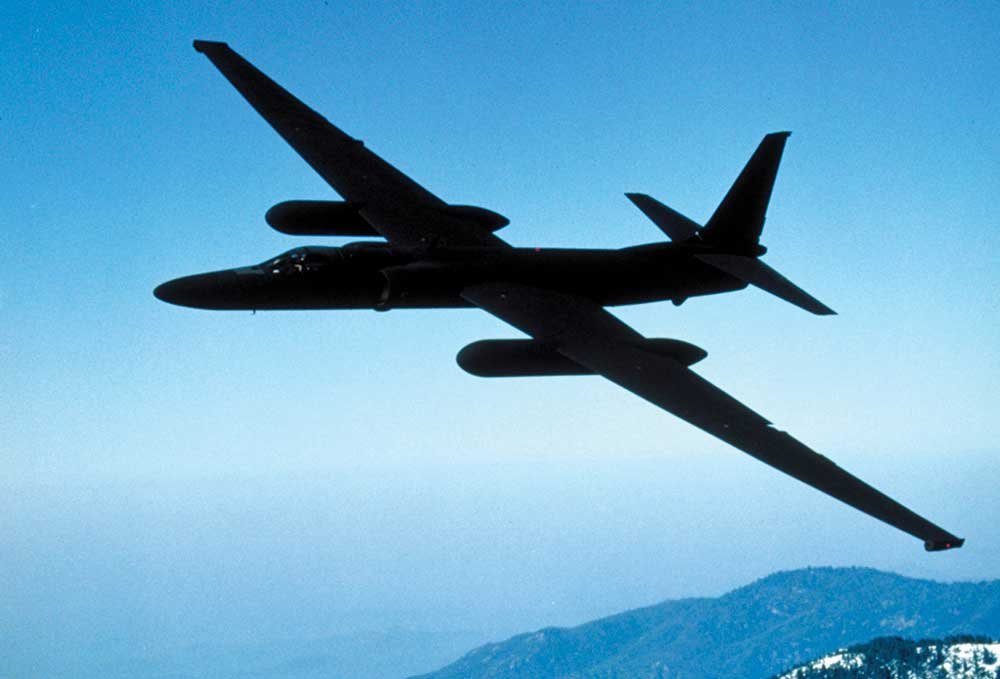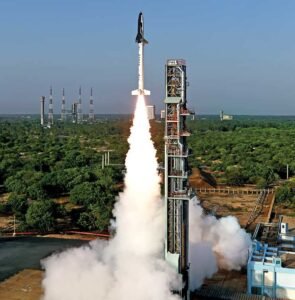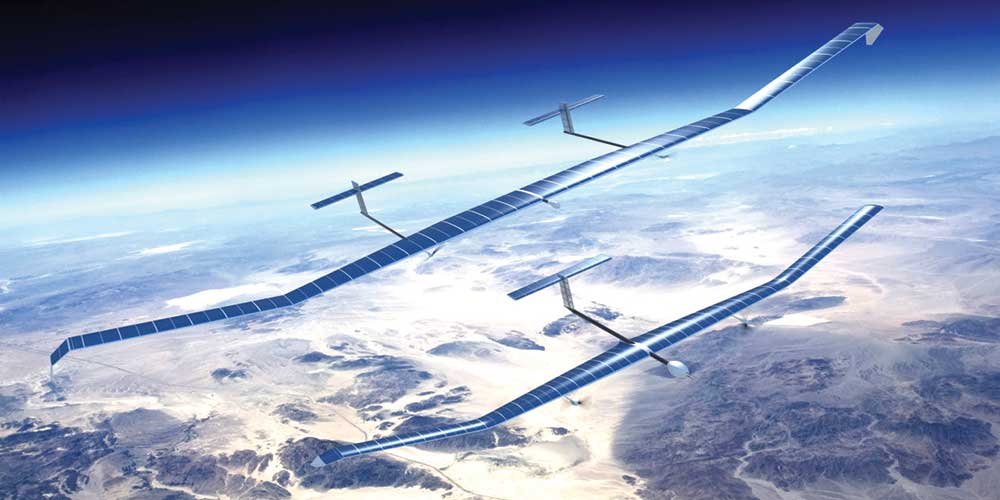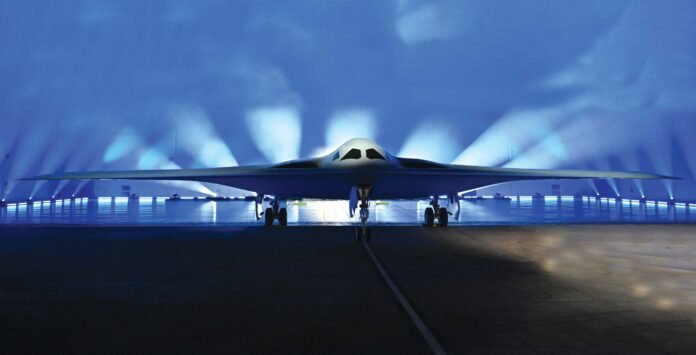In February 2023, a Chinese high-altitude balloon shot down by the United States Air Force (USAF) B-21 (Raider) aircraft near North Carolina brought the spotlight onto the hitherto little-known near-space region. The region between 20 and 100 kilometres above the Earth’s surface is termed near-space. Aircraft manoeuvre in the Earth’s atmosphere using lift generated by their wings. As altitude increases, air becomes rarer, requiring aircraft to fly at significantly higher speeds to sustain aviation, which reduces efficiency and limits manoeuvrability. Consequently, aircraft typically fly at altitudes not higher than 12 to 15 kilometres above ground level, with notable exceptions like the USAF’s U-2 spy plane, which operates at altitudes of 21 to 22 kilometres.
In space, an imaginary line 100 kilometres above the Earth’s surface, known as the Kármán Line, marks the boundary beyond which aerodynamic drag significantly impacts satellites, causing orbital decay. Satellites seeking to maintain stable orbital heights must frequently fire thrusters to return to their original orbits, consuming limited onboard fuel and reducing their lifespan. Most satellites operate at 400 to 500 kilometres in Low Earth Orbit (LEO). One of the closest satellites in LEO, a Japanese satellite, orbits at 130 kilometres above the Earth’s surface.
Near-space remains largely unexplored by most nations due to the aforementioned challenges. This region is primarily used for transit and manoeuvres during travel between space and Earth’s atmosphere and vice versa.
Advantages of Near-Space
Located closer to Earth than LEO, near-space offers unique advantages. Its proximity enables high-resolution Earth observation, and launching platforms into near-space is significantly cheaper than deploying satellites. These platforms can remain stationary over an area of interest, providing persistent surveillance and real-time high-resolution data collection. Near-space also serves as an elevated communication node.
Evolving Warfare and Near-Space
Modern warfare is rapidly evolving into multi-domain operations involving the Army, Navy, and Air Force, with space and cyber forces playing an increasingly significant role. India’s Operation Sindoor and the Israel-Iran conflict (Operation Rising Lion) in 2025 demonstrated nations employing a mix of kinetic and non-kinetic warfare, enabling simultaneous and non-linear targeting at various depths, greatly enhancing the tempo of operations across domains.

Near-space is utilised by hypersonic missiles, which travel at speeds exceeding Mach 5 and conduct the majority of their flight at altitudes lower than ballistic missiles. Radars struggle to track them due to the intense heat generated by friction and air resistance, creating a plasma effect around the missiles. Their ability to alter flight paths in near-space enhances manoeuvrability, further complicating missile defence systems. Nations are also leveraging near-space for High-Altitude Pseudo-Satellites (HAPS). Understanding the engineering and aerodynamic challenges of near-space is critical for nations aiming to exploit this region for defensive and offensive purposes. Detailed studies are needed to analyse weather phenomena in this region. Communication effects in near-space require particular attention, as they have the potential to bridge the gap between terrestrial 5G and LEO-based communication systems.
The Chinese Near-Space Flight Vehicles (NSFV) programme is progressing significantly. China has developed the Dongfeng-17 (DF-17) Hypersonic Glide Vehicle (HGV), with a range of 1,600 kilometres and a speed of Mach 10. It is also developing the Dongfeng-41 (DF-41) Hypersonic Cruise Missile (HCM) with a range of 12,000 kilometres and the Dongfeng-27 (DF-27) Hypersonic Intermediate-Range Ballistic Missile (IRBM) with speeds of Mach 8 to 10.
In 2022, Russia claimed to have deployed the Zircon hypersonic cruise missile (HCM) against Ukraine, reaching a maximum speed of Mach 8. Russia also operationalised the Kinzhal HCM, capable of Mach 12 speeds.
The Defence Research and Development Organisation (DRDO), under the Hypersonic Technology Demonstrator Vehicle (HSTDV) programme, is developing both hypersonic cruise missiles and glide vehicles. The glide vehicle project is at a more advanced stage. On November 17, 2024, the DRDO successfully flight-tested a long-range hypersonic missile off the coast of Odisha, marking a significant milestone for national security
The United States (US) is developing a range of such weapons under an ambitious programme, including a USD 756 million contract with Lockheed Martin. Countries such as France, Germany, Australia, Japan, Iran, and Israel are also pursuing hypersonic missile systems.
HAPS are solar-powered unmanned aerial vehicles (UAVs) operating in the stratosphere at altitudes between 18 and 25 kilometres. They offer services similar to satellites and can hover for extended periods, potentially months or years, by generating solar energy.
The US’s Airbus Zephyr-S is being developed as a solar-powered HAPS, having successfully completed trials of 17 days in flight. China is developing the Qimingxing-50 with similar capabilities.
China and Near-Space Command
China has prioritised allocating resources and conducting developmental trials in the near-space region. Intelligence sources indicate that in 2023, China established the Near-Space Command, expected to function jointly with the People’s Liberation Army (PLA), People’s Liberation Army Navy (PLAN), People’s Liberation Army Air Force (PLAAF), and Strategic Rocket Force. This command will oversee offensive and defensive operations in the near-space region.
Near-Space Capabilities and Indian Armed Forces

India must closely monitor developments in hypersonic technologies, HAPS, and related domains. Near-space capabilities are critical for India’s strategic defence to counter potential threats.
India is actively developing near-space capabilities and hypersonic technologies for military and space applications. The IAF is expected to play a pivotal role in integrating these technologies into India’s strategic posture, including hypersonic missiles, spaceplanes, and high-altitude platforms like solar-powered drones and balloons.
The IAF recognises the potential and opportunities offered by the near-space domain as a strategic region. Its strategy involves leveraging near-space for surveillance, early warning, and deploying weapons on elevated platforms. The IAF is expanding the use of near-space platforms to enhance Intelligence, Surveillance, and Reconnaissance (ISR), communication, and Signals Intelligence (SIGINT)/Communications Intelligence (COMINT) collection. Near-space communication nodes are considered vital for developing a robust Ballistic Missile Defence (BMD) system.
Hypersonic Missiles
The Defence Research and Development Organisation (DRDO), under the Hypersonic Technology Demonstrator Vehicle (HSTDV) programme, is developing both hypersonic cruise missiles and glide vehicles. The glide vehicle project is at a more advanced stage. On November 17,2024, the DRDO successfully flight-tested a long-range hypersonic missile off the coast of Odisha, marking a significant milestone for national security.
India is establishing a hypersonic test facility under the aegis of the Indian Institute of Technology, Kanpur (IIT-K), expected to be operational by 2027. Existing facilities at the Indian Institute of Science (IISc), Bengaluru, and Vikram Sarabhai Space Centre (VSSC), Thiruvananthapuram, can test up to 4 kilometres per second, whereas the new 24-metre hypervelocity expansion tunnel at IIT-K will enable testing of cruise missiles and capsules, like Gaganyaan, up to 10 kilometres per second.
In the field of HAPS, the Council of Scientific and Industrial Research-National Aerospace Laboratories (CSIR-NAL) in India has tested a prototype capable of hovering for hours and aims to develop a larger version with extended flight capabilities by 2027. Noteworthy are the efforts of Bengaluru-based NewSpace Research and Technologies Pvt Ltd. In February 2025, their 8-metre wingspan HAPS, named ‘ARKA’, demonstrated an endurance of 17 hours
High-Altitude Pseudo-Satellite (HAPS)
In the field of HAPS, the Council of Scientific and Industrial Research-National Aerospace Laboratories (CSIR-NAL) in India has tested a prototype capable of hovering for hours and aims to develop a larger version with extended flight capabilities by 2027. Noteworthy are the efforts of Bengaluru-based NewSpace Research and Technologies Pvt Ltd. In February 2025, their 8-metre wingspan HAPS, named ‘ARKA’, demonstrated an endurance of 17 hours. This project, under the Innovations for Defence Excellence (iDEX) initiative, aims to achieve an endurance of seven days.
India plans to develop HAPS, solar-powered drones, and balloons for various missions. These platforms will be equipped with advanced sensors and Artificial Intelligence (AI)-based systems for navigation and data analysis. Once their endurance and manoeuvrability are proven, they will be ideal for border surveillance, real-time ISR monitoring, and extending communication range, especially in remote areas.
Reusable Launch Vehicle & Spaceplane
The Indian Space Research Organisation (ISRO) is developing the Reusable Launch Vehicle–Technology Demonstrator (RLV-TD), where the booster of a satellite launch vehicle is ejected at altitudes of 50 to 80 kilometres, landing at a predetermined location over land or sea for reuse in subsequent launches. The IAF is transforming to develop space-based capabilities, including a potential spaceplane, to enhance ISR and prepare for future conflicts involving space assets.

Collaboration and Testing
The IAF, alongside the Defence Space Agency (DSA) under Headquarters Integrated Defence Staff (HQ IDS), collaborates with the DRDO, ISRO, academic institutions, and the vibrant private sector to develop technologies for effective defensive and offensive operations in near-space.
Among the various Defence Space (DefSpace) challenges launched under the iDEX initiative, priority has been given to developing near-space technologies.
In the communication and command-and-control domain, the IAF is actively collaborating with Bharat Electronics Limited (BEL) to expand the Integrated Air Command and Control System (IACCS) to include Space Situational Awareness (SSA) of satellites and other space objects, obtained through ISRO’s Network for Space Object Tracking and Analysis (NETRA) project and private space companies.
Takeaways
Near-space technologies have the potential to bridge the gap between terrestrial and space-based technologies for defensive and offensive purposes, particularly in hypersonic technologies, HAPS, communication, persistent ISR capability, and enhanced situational awareness for commanders. They are significantly cheaper than space-based systems and offer the advantage of being easily replaceable. Indian private space start-ups must be encouraged to deliver early benefits for the Indian Armed Forces.
–The writer is an IAF veteran and has been involved in air operations, intelligence and strategic matters. He has served as Assistant Chief of Air Staff (Off Ops) at Air HQ and Assistant Chief of Integrated Defence Staff (Tech Int) at HQ – IDS, appointments related to offensive operations, UAV, space and ISR matters. The views expressed are of the writer and do not necessarily reflect the views of Raksha Anirveda






